Using QR codes to elevate your digital marketing
Posted on |
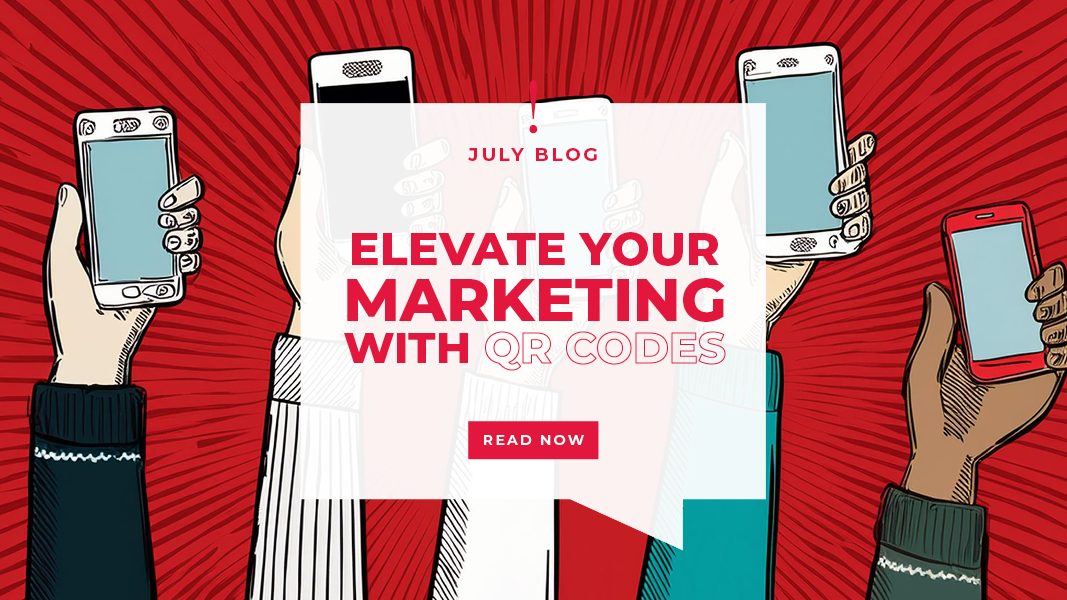
Using QR codes to elevate your digital marketing
In today’s digital age digital marketers are constantly on the lookout for innovative ways to connect with their audiences. From AI chatbots to virtual reality experiences, the next big thing can sometimes overshadow the tried-and-true methods. One tool we love which has endured the test of time is the QR code. First developed 30 years ago, the QR code continues to evolve with digital trends and transform the way marketers interact with audiences.
With the development of dynamic QR codes and tracking abilities, QR codes are invaluable to marketing campaigns and can bridge the gap between print and digital media.
The URLs on dynamic QR codes can be updated, offering flexibility to change landing pages or direct users to different locations, without the need to reprint your collateral or generate new codes.
Some QR code generators and other reporting platforms like Google Analytics now let you track analytics for codes, providing marketers the ability to record and compare measurables like traffic and page views, bounce rate, and audience data.
Thanks to these advancements, QR codes are used by millions of people every day. They can direct users to information, act as tickets to events, they can help a user make digital payments, leave feedback, check in to venues, order food at a restaurant and in countless other scenarios.
How to use QR Codes
Read on to see how dtb! Advertising incorporate QR codes in our marketing activations, and how they could help you achieve your business goals.
1. Promotional offers and discounts
Adding QR codes to print advertisements, posters, or flyers can provide users with easy access to promotional offers, exclusive discounts, or coupons. Users can scan the QR code with their smartphones to redeem the offer or be directed to a special landing page with more details about your service or promotion.
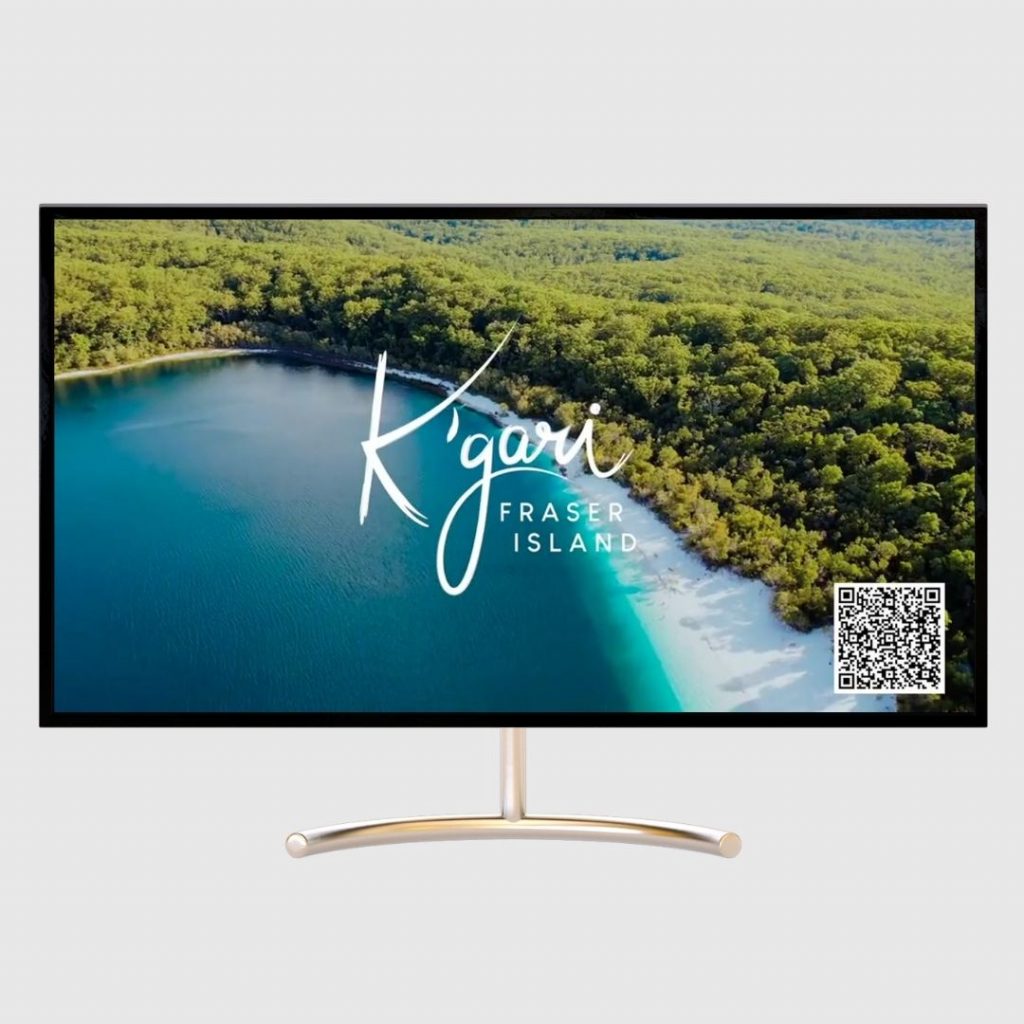
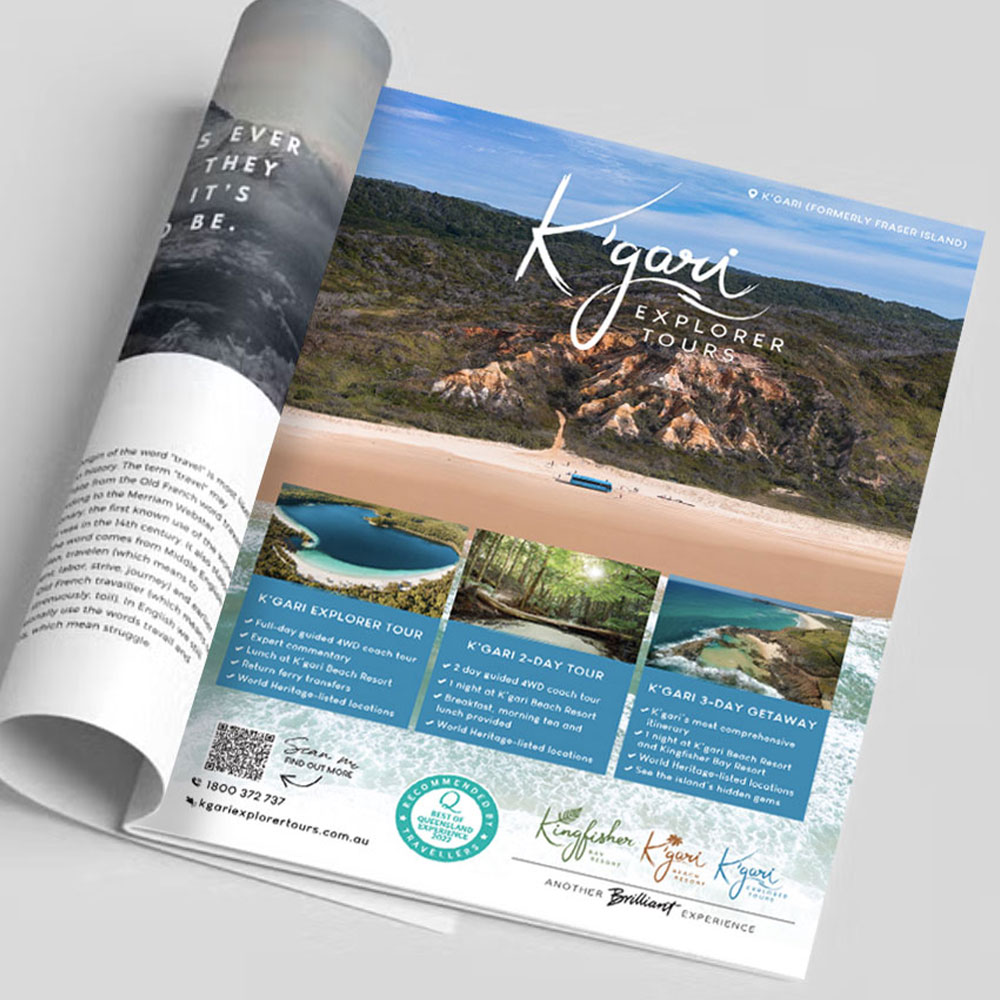
K’gari Explorer Tours utilising QR codes on digital and print media
2. Lead generation and data capture
We use QR codes to capture leads and collect customer data during marketing events, trade shows, or exhibitions. Distributing lead generation forms via QR codes on event collateral allows attendees to quickly provide their contact details on the spot.
3. Interactive print media
Incorporating QR codes into print media such as magazines, brochures, or catalogues offers an interactive experience for readers. Users can scan the QR code to access multimedia content, product demonstrations, or related articles, enriching their engagement with your brand.
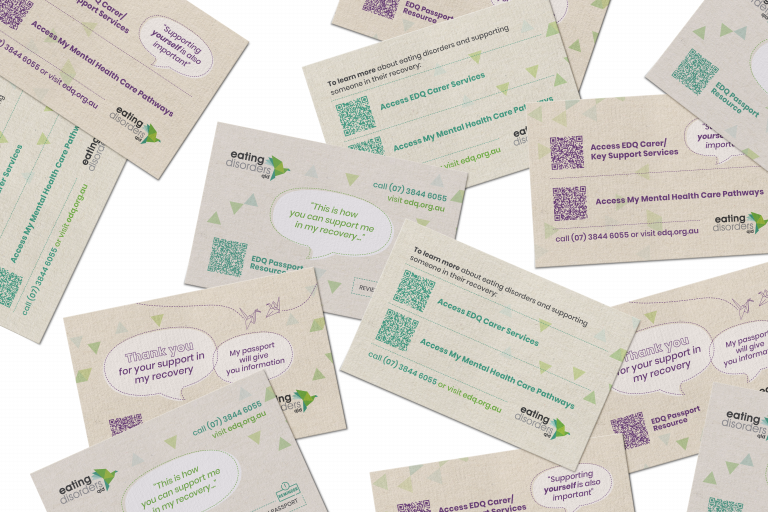
Eating Disorders Queensland QR codes on wallet cards for links to carer resources
4. Cross-media campaigns
QR codes bridge the gap between offline and online channels. QR codes can elevate traditional marketing campaigns like mailers or outdoor advertisements, by directing users seamlessly to personalised landing pages, interactive experiences, or social media profiles, without the need for them to remember a URL.
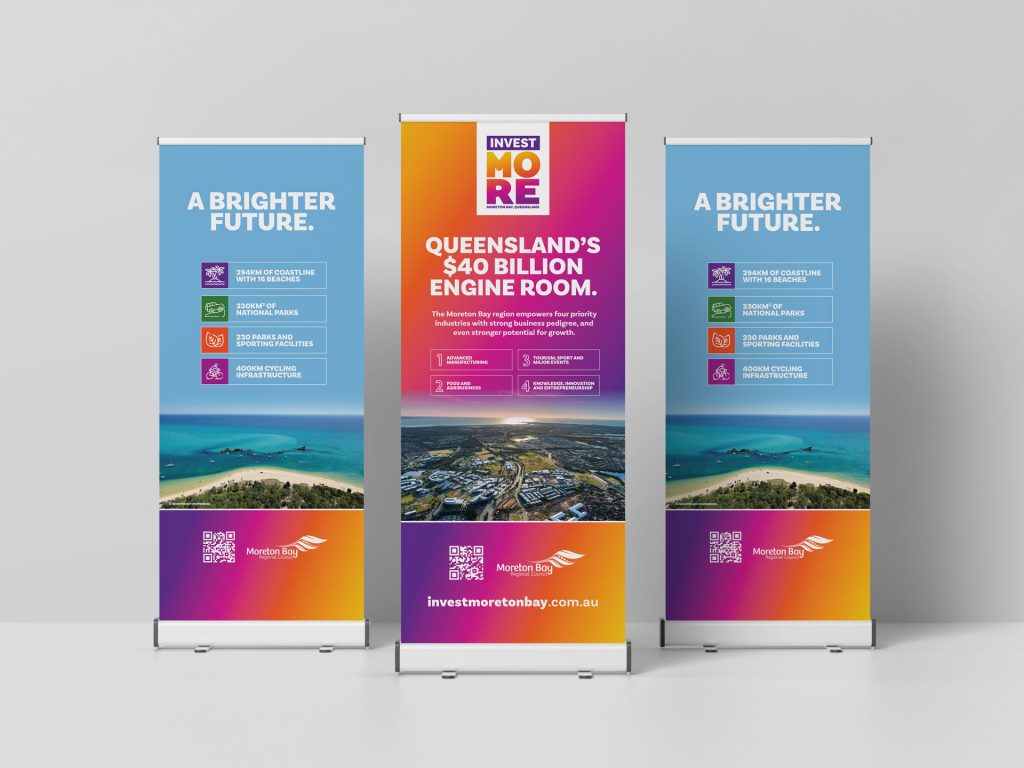
Invest Moreton Bay pull up banners to direct audiences to the landing page of their website.
5. Product demonstrations and reviews
Include QR codes in product packaging or point-of-sale displays to provide customers with product demonstrations, reviews, or testimonials. Users can scan the QR code to watch videos, read reviews, or access customer testimonials, helping them make informed purchase decisions.
6. Events promotion and ticketing
Use QR codes to promote events and facilitate ticket sales or registrations. Include QR codes in event invitations, posters, or social media posts to allow users to quickly access event details, RSVP, or purchase tickets directly from their smartphones.
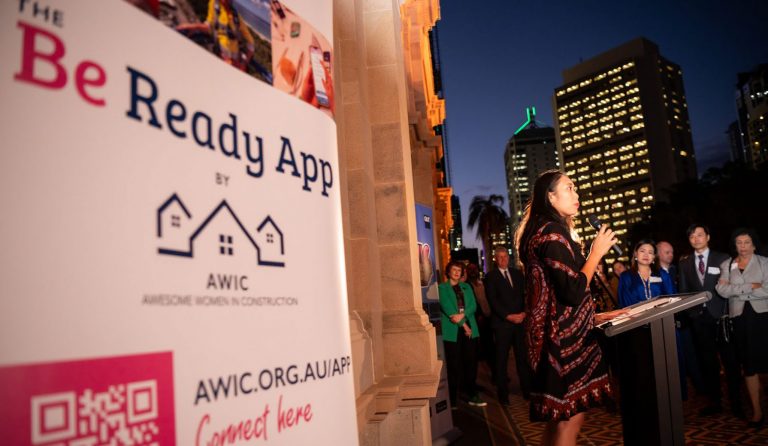
Awesome Women In Construction (AWIC) using a QR code to direct attendees of an event to download the BeReady App.
7. Location-based marketing
Implement QR codes in location-based marketing campaigns to drive foot traffic to physical stores or venues. Place QR codes in strategic locations such as storefront windows, or transit advertisements, like bus stops, enticing passersby to scan the code for special promotions or offers available at nearby locations. Always consider the accessibility of QR codes in location-based campaigns –avoid roadside billboards or advertisements targeting drivers.
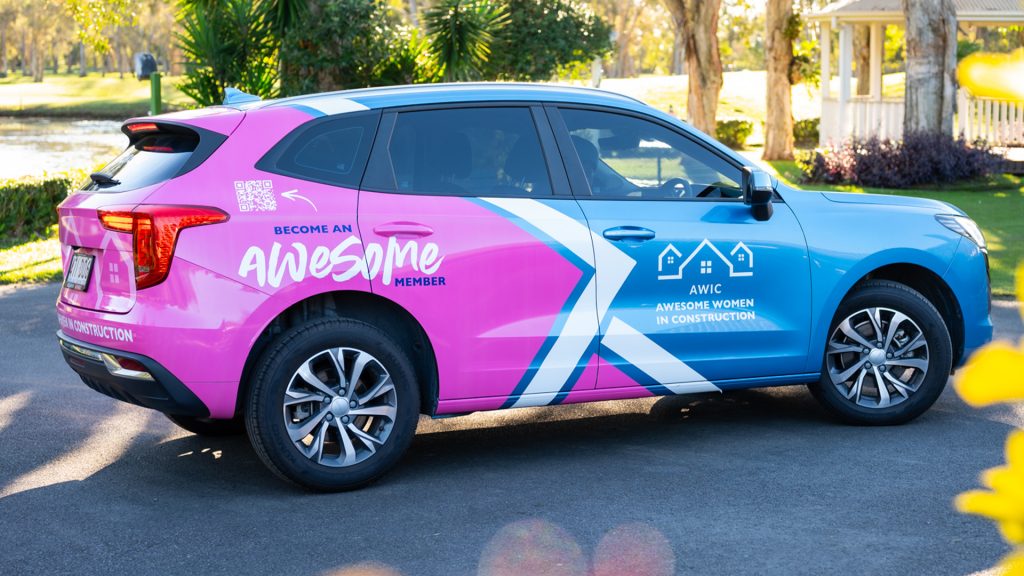
Awesome Women In Construction (AWIC) using a QR code on their car for brand marketing.
8. Augmented reality experiences
Create immersive augmented reality (AR) experiences by using QR codes to engage customers in interactive brand experiences. Users can scan QR codes to unlock AR content such as virtual try-on experiences, product visualisations, or gamified interactions, fostering deeper engagement with the brand.
9. Feedback and surveys
Use QR codes to gather feedback and conduct surveys as part of customer satisfaction initiatives or market research efforts. Include QR codes on receipts, packaging, or marketing materials, prompting customers to scan the code and provide feedback or participate in surveys. This helps businesses gather valuable insights and improve services or offerings.
10. Product packaging and labels
Add QR codes to product packaging or labels to provide consumers with additional product information, user manuals, or instructions. This can enhance the overall customer experience and help users make informed purchasing decisions.

Converse use QR codes to give customers information about the product they purchase
Overall, the humble QR code can be a versatile tool in marketing and advertising, offering opportunities to enhance engagement, drive conversions, and measure campaign effectiveness when used strategically with other marketing tactics and channels.
dtb! Advertising is an award-winning, full service digital marketing agency based on the Sunshine Coast. If you’re interesting in elevating your marketing, media, digital or social activities we’d love to have a chat to show you what’s possible. Call us on 07 5458 5600 or email hello@dtb.com.au and let’s get down to business!
Leave a Reply